Introduction
In 2025, water conservation is more critical than ever. With unpredictable weather patterns, increasing droughts, and rising utility costs, homeowners and gardeners are turning to rainwater harvesting as a sustainable, cost-effective solution.
Rainwater harvesting is the practice of collecting and storing rainwater for later use, reducing dependence on municipal water supplies while supporting eco-friendly gardening. Whether you have a small balcony garden or a large backyard, implementing rainwater harvesting techniques can lower your water bills, improve plant health, and reduce environmental impact.
This comprehensive guide explores 14 must-try rainwater harvesting tricks, along with product recommendations, maintenance tips, and expert advice to help you maximize water efficiency in your garden.
Why Rainwater Harvesting Matters in 2025?
1. Climate Change & Water Scarcity
- Many regions face droughts and water restrictions, making rainwater an essential alternative.
- Collecting rainwater reduces pressure on groundwater supplies and municipal systems.
2. Cost Savings
- Reduces water bills by supplementing irrigation needs.
- Minimizes soil erosion and runoff, improving garden health.
3. Healthier Plants
- Rainwater is free of chlorine, fluoride, and salts found in tap water, making it ideal for seedlings and sensitive plants.
- Promotes better nutrient absorption in soil.
4. Sustainability & Eco-Friendliness
- Lowers carbon footprint by reducing reliance on treated water.
- Supports self-sufficient gardening and permaculture practices.
14 Must-Try Rainwater Harvesting Tricks for 2025
1. Install a Quality Rain Barrel with a Screened Lid
A sturdy rain barrel is the backbone of any effective rainwater harvesting system. It allows you to collect and store rainfall directly from your rooftop runoff, giving you access to free, chemical-free water for your garden whenever you need it.
🔍 Key Features to Look For:
- ✅ UV-resistant plastic or food-grade material
Prevents algae buildup and ensures the water remains safe for garden use. - ✅ Fine mesh lid or screen
Keeps out debris, insects, and especially mosquitoes, which are drawn to standing water. - ✅ Built-in spigot near the base
Allows for easy access to the stored water via a watering can or hose.
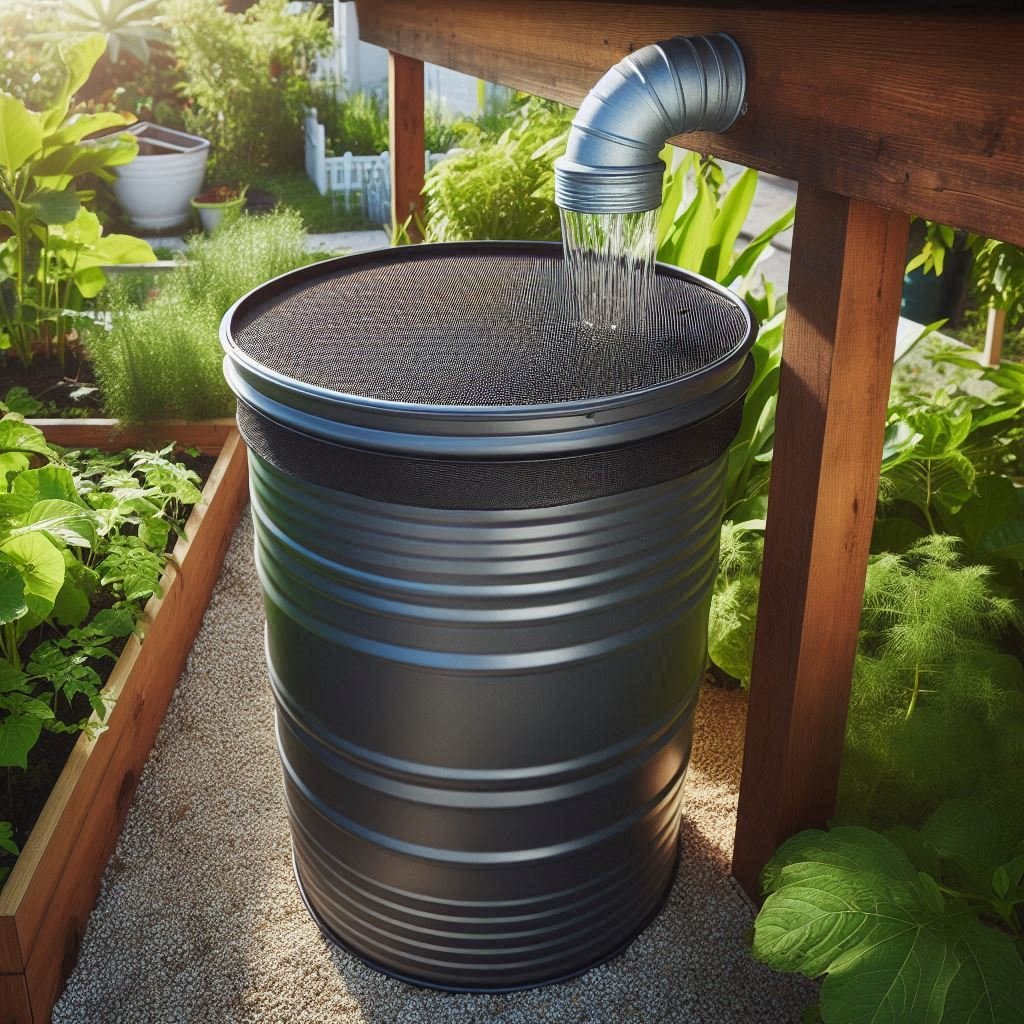
💡 Pro Tip:
Place the rain barrel directly beneath a roof downspout to maximize collection. Consider using a diverter to channel rain efficiently and avoid overflow during heavy rains.
Bonus: If you’re looking for a beginner-friendly and budget option, search Temu for a “Collapsible Rainwater Collection Barrel”, many models include mesh lids and spigots at a fraction of the cost.
2. Use a First-Flush Diverter
One of the smartest additions to your rainwater harvesting system is a first-flush diverter. This device helps ensure the water you collect is as clean and plant-safe as possible.
🌧️ Why It’s Essential:
The first few minutes of rainfall usually wash off dust, pollen, bird droppings, and other pollutants from your roof. If you collect this initial runoff directly, it can contaminate your water storage.
🚿 What a First-Flush Diverter Does:
- Redirects the first few gallons of dirty water away from your rain barrel or tank.
- Ensures only cleaner water is stored for later use in your garden.
- Helps reduce algae growth and sludge buildup inside your container.
⚙️ Best Practice for Rainwater Harvesting:
Install an adjustable diverter so you can control how much water is flushed based on your roof size and rainfall intensity.
Pro Tip: Combine a diverter with a mesh gutter filter for even better water quality. You can find affordable diverter kits on Temu by searching “rainwater diverter for downspouts.”
3. Elevate Your Rain Barrel for Better Water Pressure
Gravity is your best friend when it comes to rainwater harvesting. By simply elevating your rain barrel, you can significantly improve water pressure, making your system more effective and user-friendly.
🧱 Why Elevation Matters:
- Increases gravity-fed flow, allowing water to move more easily through hoses or irrigation lines.
- Makes it more convenient to fill watering cans or buckets directly from the spigot.
- Reduces the need for pumps in smaller or low-pressure systems.
🪜 How High Should You Elevate It?
Place your rain barrel on a stable platform 12–24 inches high, such as:
- Cinder blocks
- Pressure-treated wood stands
- Heavy-duty plastic bases
Ensure the platform is level and sturdy, a full rain barrel can weigh over 400 pounds!
💡 Pro Tip:
If you’re connecting a drip irrigation system, barrel height can directly impact flow rate. The higher the barrel, the better the pressure, just don’t go so high it becomes unstable.
Need a budget base? Search “rain barrel stand” or repurpose stackable blocks or crates. Many DIY tutorials also offer upcycled solutions for free.
4. Connect Multiple Barrels for Larger Capacity
If you live in a rainy region or have a large garden, one barrel might not be enough. Connecting multiple rain barrels in series allows you to dramatically increase your Rainwater Harvesting without installing a large tank.
🔗 How It Works:
Use linkage kits, PVC pipes, or overflow hoses to link barrels together. As the first barrel fills up, the excess water automatically flows into the next one, and so on.
🌧️ Why It’s Ideal:
- Maximizes rainwater harvesting during heavy downpours
- Increases total storage capacity without needing a massive single tank
- Perfect for watering larger gardens, orchards, or raised beds
🛠️ Setup Tips:
- Use same-height barrels for even flow
- Connect with sealed fittings to prevent leaks
- Add an overflow outlet on the last barrel in the chain
💡 Pro Tip:
Place barrels on a gentle slope or use slightly shorter stands for downstream barrels—to help with gravity-based drainage and smoother water flow between containers.
Search “rain barrel connector kit” on Temu for low-cost solutions, or DIY with hose and sealant from your local hardware store.
5. Incorporate a Solar-Powered Water Pump
While gravity does the job for basic watering, it sometimes isn’t enough, especially if you’re running water uphill or need consistent pressure. That’s where a solar-powered water pump becomes a game changer in your rainwater harvesting system.
⚡ Why Go Solar?
- Provides steady water pressure for drip irrigation, spray hoses, or sprinkler heads
- Operates off-grid—no electricity needed
- Ideal for eco-conscious gardeners and remote setups
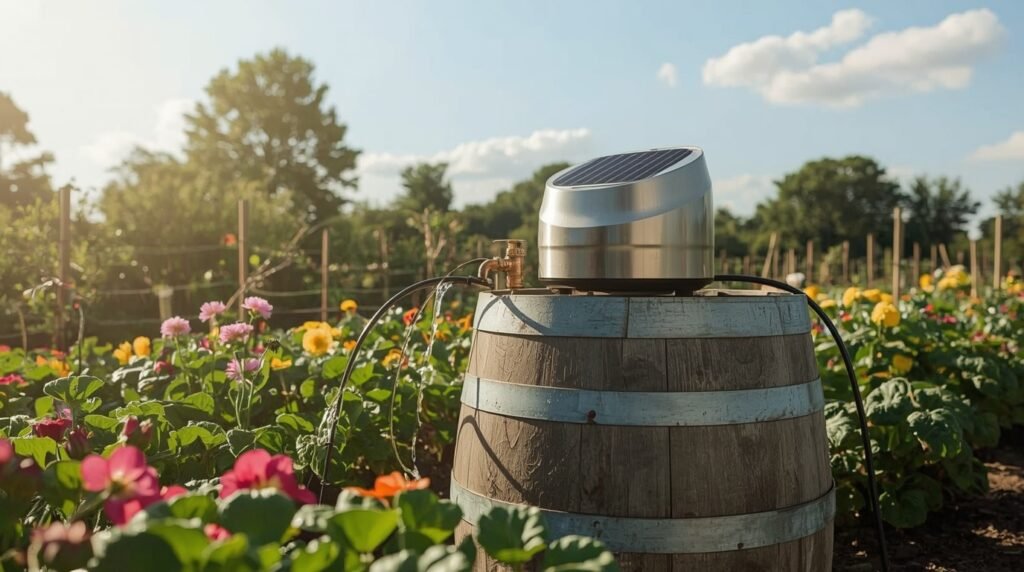
🔧 What to Look For:
- 12V or 24V low-voltage solar pump with built-in panel or separate power source
- Adjustable flow rates and filter screens to prevent clogs
- Compatible hose connections for easy setup
🌱 Best Use Cases:
- Raised beds that sit above barrel height
- Vertical gardens or stacked containers
- Greenhouses where timed, pressurized watering is preferred
💡 Pro Tip:
Install a battery backup or solar charge controller for consistent performance on cloudy days. Also, make sure your rain barrel has a fine filter or mesh to protect the pump from debris.
Temu Tip: Search for “solar garden irrigation pump” to find compact, affordable models that work great with rain barrel setups for Rainwater Harvesting.
6. Use Rainwater for Seedlings and Sensitive Plants
Not all water is created equal, especially when it comes to your most delicate plants. Rainwater harvesting gives you access to soft, natural water that’s free from chlorine, fluoride, and salts, making it ideal for your garden’s most sensitive residents.
🌱 Why Rainwater Is Better:
- Chemical-free: Unlike tap water, rainwater won’t damage young roots or beneficial soil microbes.
- Naturally soft: Lower mineral content helps prevent salt buildup in pots or seed trays.
- Slightly acidic: Beneficial for certain plants that thrive in lower pH environments.
🌿 Perfect For:
- Seedlings & germinating seeds: Reduces stress during early growth.
- Tender herbs: Basil, cilantro, parsley, and mint respond better to untreated water.
- Acid-loving plants: Azaleas, camellias, rhododendrons, and blueberries all prefer slightly acidic rainwater.
💡 Pro Tip:
Use a spray bottle or watering can filled with rainwater to gently moisten seed trays and indoor pots. Store a small jug of harvested water indoors for use on houseplants too!
Bonus: Look for spray nozzles or fine misting cans on Temu to make watering seedlings even more gentle and controlled.
7. Set Up a Simple Drip Irrigation System
Pairing rainwater harvesting with a drip irrigation system is one of the smartest ways to water your garden. This setup delivers moisture directly to the roots where plants need it most, reducing waste and promoting healthier growth.
💧 Why Use Drip Irrigation:
- Conserves water by minimizing evaporation and runoff
- Delivers consistent moisture to each plant, reducing stress and disease
- Works great with gravity-fed barrels or solar-powered pumps
🔌 Automate It:
Install a timer or a smart irrigation controller for Rainwater Harvesting to automate watering based on time of day or soil moisture levels. This ensures maximum efficiency, especially for busy gardeners or hot climates.
🔧 How to Set It Up:
- Connect a soaker hose or drip line to your rain barrel’s spigot
- Use pressure regulators if needed to protect fittings
- Lay hoses around plant bases or under mulch to retain moisture
💡 Pro Tip:
Run your system early in the morning or late in the evening to reduce evaporation. Mulch over the hose lines for added water retention and weed control.
Budget-friendly kits for drip irrigation and timers can be found on Temu, search for “drip irrigation kit with timer” or “gravity-fed watering system.”
8. Install Gutter Guards to Keep Debris Out
Clean gutters are critical to an efficient rainwater harvesting system. Leaves, twigs, and roof debris can clog your downspouts, contaminate your collected water, and reduce flow. That’s where gutter guards come in.
🛡️ Why Gutter Guards Matter:
- Prevent clogs that block rainwater from reaching your barrels
- Reduce contamination from organic debris, bird droppings, and nesting insects
- Extend the life of your gutters and make maintenance easier
🧰 What to Use:
- Mesh screens or metal guards that fit over the gutter opening
- Brush-style inserts that sit inside the gutter and deflect leaves
- Downspout filters to catch smaller particles before water enters the barrel
🧽 Maintenance Tip Rainwater Harvesting:
Even with guards, it’s smart to clean your gutters at least twice a year, especially before and after rainy seasons. Regular checks keep your system flowing smoothly and your stored water clean.
💡 Pro Tip:
Combine gutter guards with a first-flush diverter (see tip #2) for a double layer of protection against dirt and debris.
Temu has affordable clip-on gutter screens and filter mesh, just search for “gutter guard mesh roll” or “rainwater filter screen.”
9. Collect Rainwater from Multiple Roof Surfaces
Why limit yourself to just one downspout? To truly maximize your rainwater harvesting potential, consider collecting from multiple roof sections, especially if your home or shed has more than one slope or level.
🌦️ Why It Works:
- Increases total water collected, especially during heavy rainfall
- Utilizes more of your available square footage
- Ideal for homes, greenhouses, garages, or garden sheds with additional roof space
🏠 Roof Material Matters:
Not all roofing materials are equal when it comes to water quality:
- ✅ Metal or tile roofs are best non-porous, easy to clean, and less prone to leaching contaminants
- ⚠️ Asphalt shingles may release trace oils and particles, so use a first-flush diverter (see tip #2) before storing the water
🔧 How to Set It Up:
- Extend or split downspouts using PVC pipes or flexible drain tubing
- Direct water from each roof section into a shared barrel system or separate containers
- Use diverters and leaf guards to keep the system clean and manageable
💡 Pro Tip:
Mark each collection point with tags or colored tape to monitor which roof section collects the most water, and adjust your system over time for optimal efficiency.
On Temu, search “roof rainwater collection system” or “multi-roof rain diverter” for helpful kits and accessories.
10. Use a Collapsible Rainwater Tank for Space Saving
If you’re gardening in an urban area or tight space, bulky barrels may not be practical. That’s where a collapsible rainwater tank shines. These flexible containers are ideal for compact rainwater harvesting without sacrificing functionality.
🏙️ Why It’s Great for Small Spaces:
- Takes up minimal room when deployed
- Folds flat for easy off-season storage
- Lightweight, portable, and easy to set up—no tools required
📦 Common Features:
- 100–250L capacity suitable for balcony gardens, patios, or greenhouses
- Zippered mesh lids to block debris and insects
- Drain tap at the bottom for hose or watering can access
- Reinforced frames or rings to keep shape while in use
🪴 Perfect For:
- Apartment balconies or rooftop gardens
- Seasonal gardeners who don’t want a permanent barrel
- Pop-up growing spaces or mobile garden setups
💡 Pro Tip:
Set your collapsible tank on a wooden pallet or bricks to improve water pressure and prevent sagging at the base.
On Temu, search “collapsible rain barrel” or “foldable rainwater collection bag” for budget-friendly, portable options.
11. Mulch Garden Beds to Retain Rainwater Harvesting
Using mulch is a simple but powerful way to make the most of your rainwater harvesting efforts. Organic mulch not only enriches the soil but also helps retain moisture, keeping your plants hydrated longer and cutting down on how often you need to water.
🌿 Benefits of Mulching:
- Reduces surface evaporation by shading the soil
- Keeps soil temperature stable, protecting roots from heat stress
- Suppresses weeds that compete for water and nutrients
- Adds organic matter as it breaks down, improving soil structure
🍂 Best Mulch Types:
- Straw or hay
- Wood chips or bark
- Shredded leaves or composted green waste
💡 Pro Tip:
Apply a 2–4 inch layer of mulch around plants, avoiding direct contact with stems or trunks to prevent rot. Mulching under drip irrigation lines or soaker hoses also improves water absorption efficiency.
Pro gardeners recommend pairing mulch with rainwater irrigation for maximum water conservation and soil health.
12. Build a Rain Garden for Overflow Water
A rain garden is an eco-friendly way to manage excess water from your rainwater harvesting system while beautifying your landscape. It’s a shallow, planted depression designed to capture and absorb overflow during heavy rains.
🌧️ Why Build a Rain Garden?
- Filters pollutants like fertilizers, oils, and debris before water reaches the groundwater
- Helps prevent erosion and reduces stormwater runoff
- Supports local wildlife by providing habitat for birds and beneficial insects
- Recharges groundwater naturally, promoting a healthy water cycle
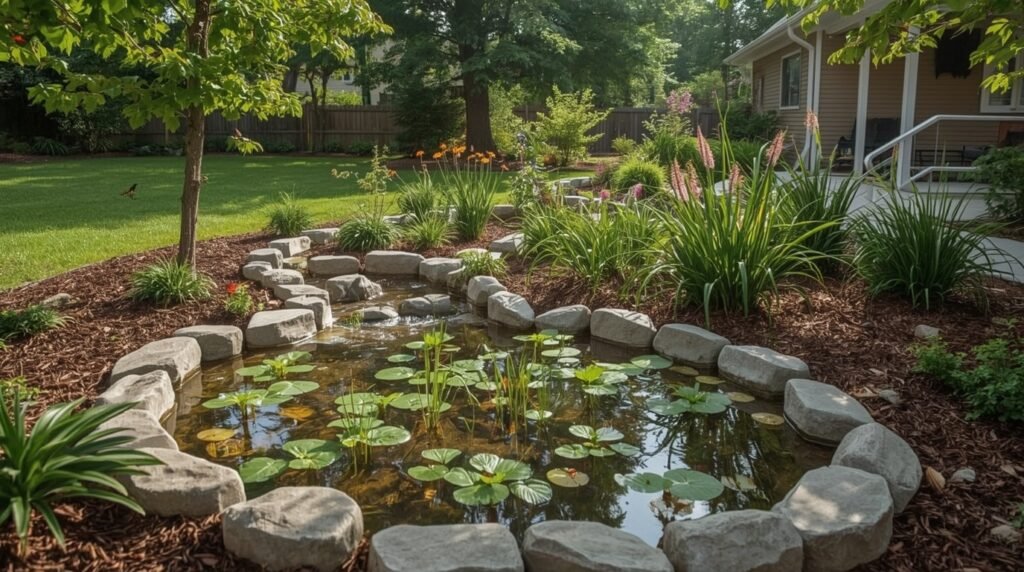
🌿 What to Plant:
Choose water-tolerant, native plants that thrive in moist conditions such as:
- Ferns
- Sedges
- Wildflowers like coneflowers and black-eyed Susans
- Grasses adapted to wet soils
💡 Pro Tip:
Position your rain garden near downspouts or overflow outlets from your barrels. Use a slight depression with well-draining soil mixed with compost to ensure good infiltration.
Many DIY guides and kits are available online to help you design your rain garden for maximum effectiveness.
13. Use Rainwater Harvesting for Composting and Soil Moistening
Rainwater harvesting isn’t just for plants—using collected rainwater to moisten your compost pile can dramatically improve decomposition and soil health.
🌱 Benefits for Compost:
- Keeps your compost moist but not soggy, which is essential for microbial activity
- Speeds up the breakdown of organic materials
- Reduces the need for tap water, saving you money and resources
🌿 Benefits for Soil:
- Moistening garden beds with rainwater encourages beneficial soil microbes
- Improves soil structure and nutrient availability for healthier plants
- Avoids the salts and chemicals sometimes found in tap water that can harm soil life
💡 Pro Tip:
Water your compost and soil gradually using a watering can or drip irrigation fed by your rain barrel to maintain ideal moisture levels.
Consider adding a compost thermometer (available on Temu) to monitor temperature and ensure your pile is decomposing efficiently.
14. Regularly Clean and Maintain Your System
To keep your rainwater harvesting setup efficient and safe, regular maintenance is key. Neglecting your system can lead to clogged gutters, algae buildup, and mosquito breeding, which reduces water quality and usability.
🔍 Monthly Checks:
- Clean gutters and mesh screens to prevent blockages
- Inspect barrels and tanks for algae growth or mosquito larvae
- Flush out your barrels every few months to remove sediment and debris
🦟 Mosquito Prevention Tips:
- Add mosquito dunks containing Bti bacteria, which are safe for plants but lethal to mosquito larvae
- Alternatively, apply a very thin layer of vegetable oil on the water surface to block mosquito breathing
💡 Pro Tip:
Schedule maintenance checks before and after rainy seasons to keep your system in top shape year-round.
You can find mosquito dunks and gutter cleaning tools on Temu by searching “mosquito control for rain barrels” and “gutter cleaning brush.”
Bonus: Top Rainwater Harvesting Products for 2025
Looking to upgrade your rainwater harvesting setup? Here are some of the best products for 2025 that combine quality, affordability, and user-friendly design:
| Product | Best For | Where to Buy |
|---|---|---|
| Foldable Rainwater Barrel (100–250L) | Small-space gardening | Temu, Amazon |
| Solar-Powered Water Pump | Drip irrigation | Temu, EcoFlow |
| First-Flush Diverter Kit | Cleaner water storage | Home Depot, Amazon |
| Collapsible Garden Tarp | DIY water catchment | Temu, Walmart |
Pro Tip:
Always check for product reviews and compatibility with your current system before purchasing. Many of these items are also available with free shipping on Temu, making it easier to try them out without a big upfront investment.
Frequently Asked Questions (FAQ)
Q: Is rainwater safe for edible plants?
✅ Yes! Rainwater is free of chlorine and chemicals, making it ideal for vegetables, fruits, and herbs.
Q: How much rainwater can I collect?
📊 1 inch of rain on a 1,000 sq ft roof = ~600 gallons!
Q: Do I need a permit for rainwater harvesting?
⚠️ Most areas allow it, but some states (e.g., Colorado) have restrictions. Check local laws.
Q: How do I prevent mosquitoes in my rain barrel?
🦟 Use fine mesh screens, mosquito dunks, or a thin oil layer.
Conclusion
Rainwater harvesting is a true game-changer for sustainable gardening in 2025. By implementing these 14 must-try tricks, you can:
- ✔️ Save money on water bills
- ✔️ Grow healthier plants with chemical-free, natural water
- ✔️ Reduce your environmental footprint by conserving precious water resources
From simple rain barrels to advanced solar-powered irrigation systems, the tools and techniques available today make harvesting rainwater easier and more efficient than ever before.
Start small, think big, and make every raindrop count on your journey to a greener, thriving garden!


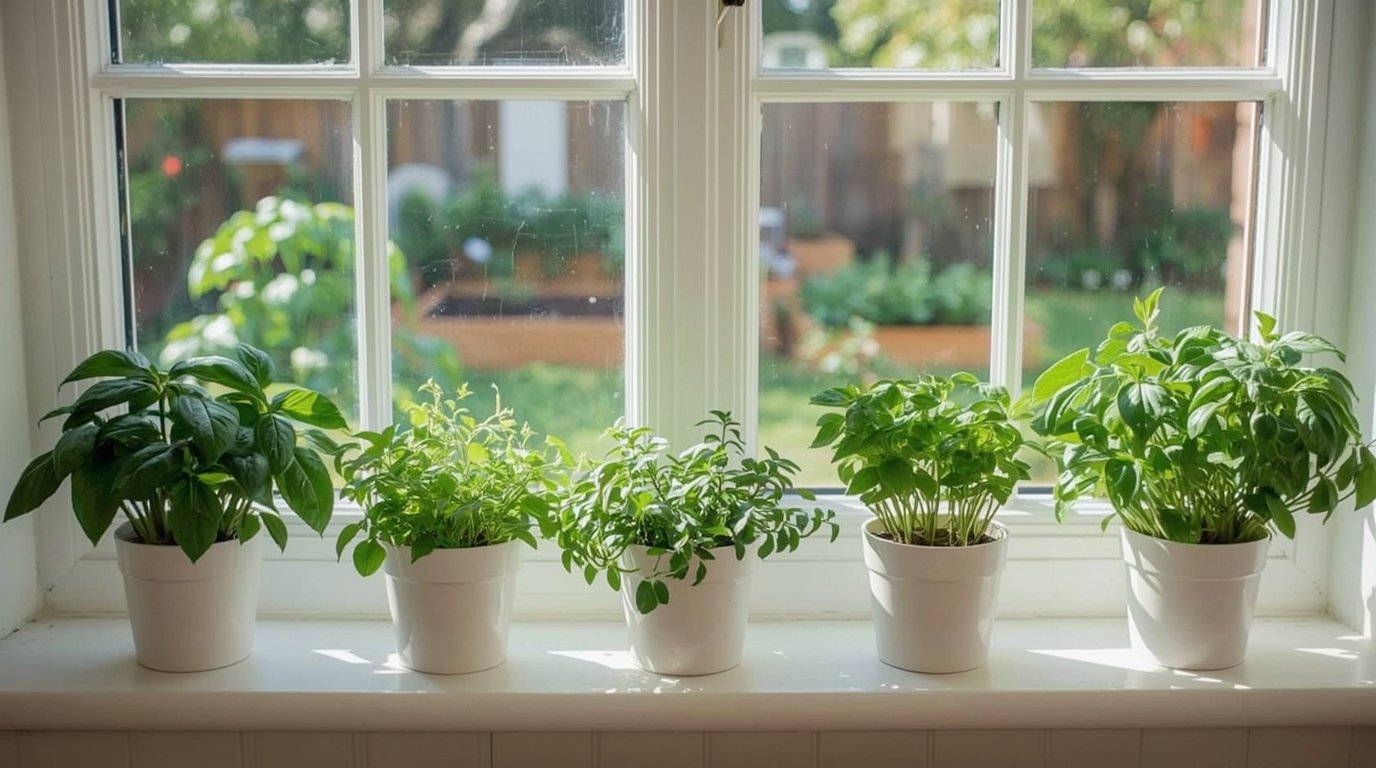



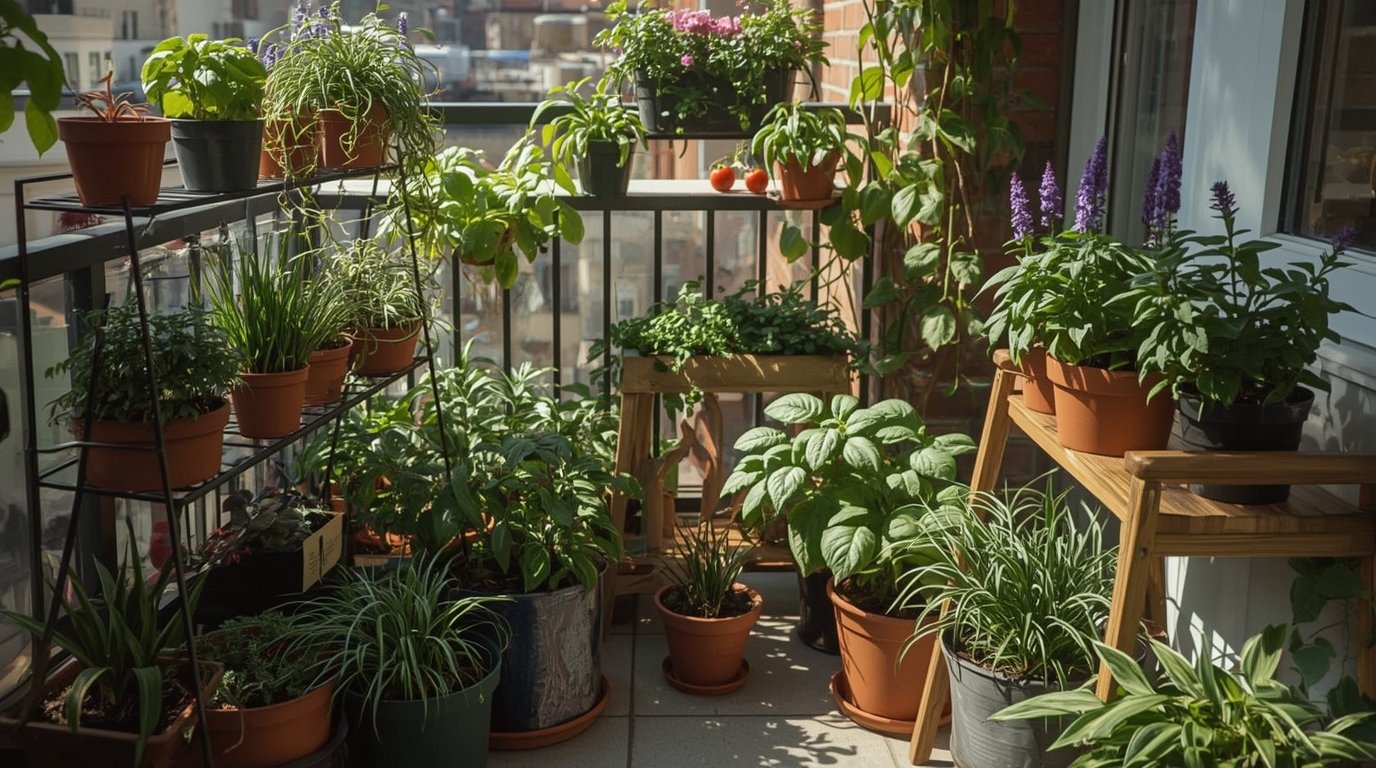
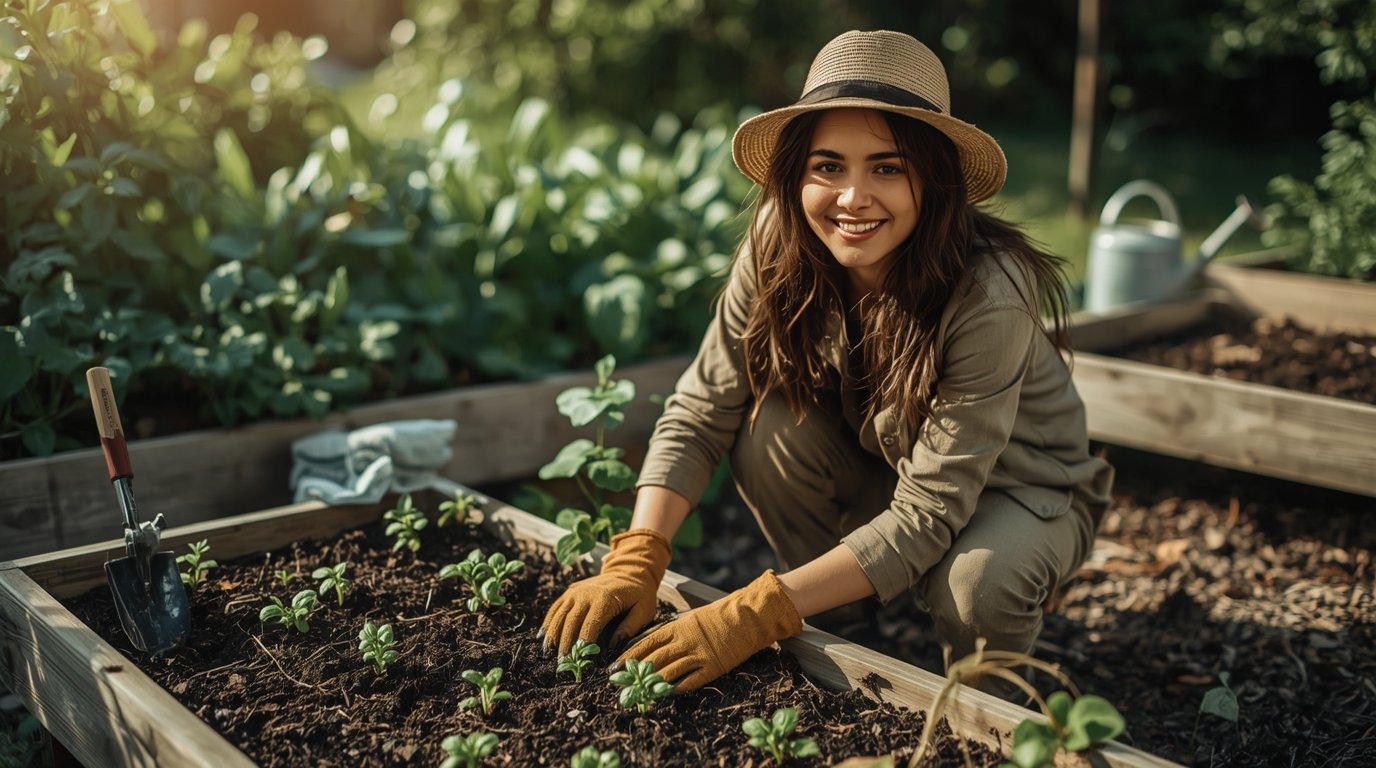

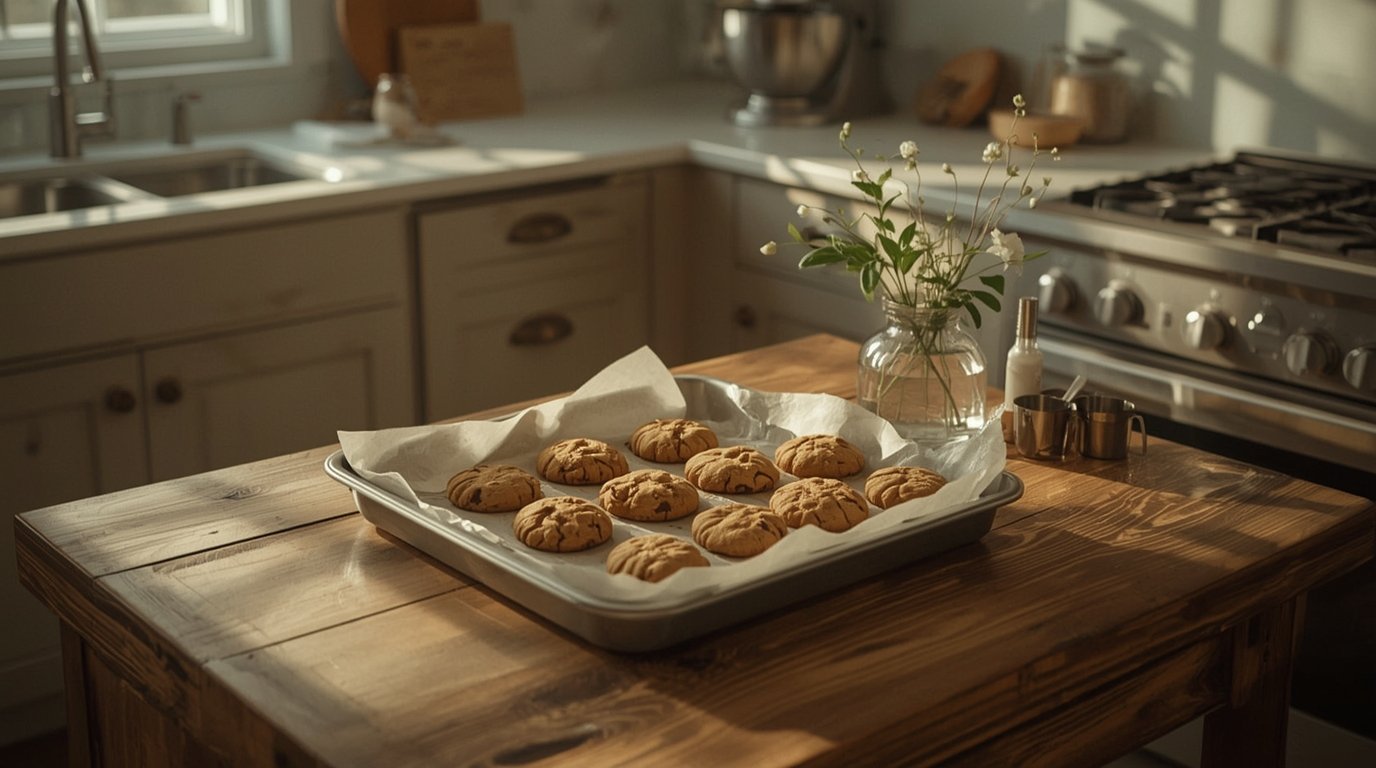


Leave a Reply